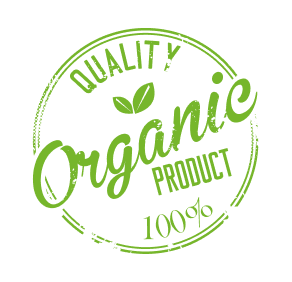GINANB R&D Lab Supply 99% High Purity Spermidine Trihydrochloride Powder CAS 334-50-9
Spermidine trihydrochloride
Product Name:Spermidine Trihydrochloride
COA NO.:334-50-9
- Molecular formula: C7H22Cl3N3
- Molecular weight : 254.63
Appearance: white powder
Specification:99%
Sample: Available
Shelf life: two years
Storage : Cool Dry Place
Package:1kg/bag ;25kg/drum
product description
What is Spermidine trihydrochloride?
Chemical Nature
Basic Properties:
Spermidine Trihydrochloride (CAS No.: 334-50-9) is a stable hydrochloride salt form of the naturally occurring polyamine spermidine. Its molecular formula is C₇H₁₉N₃·3HCl, with a molecular weight of 254.63 g/mol. It appears as a white crystalline powder.
Solubility:
It is highly soluble in water (50 mg/mL) and DMSO (25 mg/mL), but insoluble in ethanol, making it suitable for formulation development.
Biological Origin and Mechanism
Spermidine naturally occurs in various foods (such as legumes, grains, and dairy products) and in human tissues. However, its levels decline with age, necessitating external supplementation.
Core Mechanism:
Spermidine promotes autophagy—a cellular self-renewal process that degrades and recycles damaged components to maintain cellular homeostasis. Additionally, it negatively modulates NMDA receptors, providing neuroprotective effects.

Applications:
1. Anti-Aging and Lifespan Extension
Cellular Renewal:
Induces autophagy to clear senescent cells and slow organ functional decline. A human cohort study (n = 829) showed that individuals with high spermidine intake had a 40.5% lower all-cause mortality, equivalent to being 5.7 years biologically younger.
Telomere Protection:
Supports the stability of telomeres (chromosome ends), thereby reducing the accumulation of cellular aging markers.
2. Neuroprotection and Cognitive Enhancement
Inhibition of NMDA Receptor Overactivation:
Reduces excitotoxicity and improves the survival rate of brain cells.
Clinical Correlation:
Studies suggest spermidine may lower the risk of Alzheimer’s disease and enhance memory and cognitive flexibility.
3. Antioxidant and Anti-Inflammatory Effects
Reduction of Oxidative Stress:
Significantly inhibits hydrogen peroxide (H₂O₂) and superoxide anion (O₂⁻·), while enhancing superoxide dismutase (SOD) activity.
Systemic Protection:
Alleviates chronic inflammation and supports cardiovascular health, such as by reducing the risk of atherosclerosis.
4. Skin Repair and Anti-Aging
Epidermal Regeneration:
Promotes autophagic clearance of damaged collagen, stimulates fibroblast proliferation, and reduces the appearance of wrinkles.
Barrier Enhancement:
Maintains the structural stability of lipids in the stratum corneum, improving the skin’s moisture retention.
5. Metabolic and Immune Regulation
Mitochondrial Function Optimization:
Boosts cellular energy metabolism and helps alleviate post-exercise muscle fatigue.
Immune Cell Activation:
Enhances the activity of natural killer (NK) cells, improving the body’s ability to eliminate pathogens.
Fuctions:
1. Dietary Supplement Ingredient
Anti-Aging Capsules:
Recommended dosage is 5–10 mg/day. Often combined with NMN (Nicotinamide Mononucleotide) or Resveratrol for synergistic effects.
Sports Supplements:
Promotes muscle recovery and can be formulated together with Branched-Chain Amino Acids (BCAAs).
Neurohealth Products:
Combined with Phosphatidylserine (PS) to enhance blood-brain barrier permeability and neuroprotective efficacy.
2. Cosmetic Ingredient
| Formulation Type | Recommended Concentration | Functional Target |
|---|---|---|
| Anti-aging serum | 0.1–0.5% | Activates skin autophagy, reduces wrinkle depth |
| Antioxidant lotion | 0.05–0.2% | Neutralizes free radicals, brightens skin tone |
| Repair cream | 0.3–1% | Strengthens skin barrier, soothes redness/sensitivity |
3. Research and Pharmaceutical Applications
Autophagy Research Tool:
Used in studies of cancer and neurodegenerative disease mechanisms.
Drug Carrier:
Leverages its cationic properties to encapsulate nucleic acid-based drugs, such as siRNA.
💎Spermidine trihydrochloridet COA generally includes the following test items and standards:
| Test Item | Specification | Result | Method | |
|---|---|---|---|---|
| Appearance | White crystalline powder | Conforms | Visual inspection | |
| Identification (IR/NMR) | Consistent with reference standard | Conforms | IR & ¹H-NMR | |
| Assay (on dry basis) | ≥ 98.0% | 99.2% | HPLC | |
| Water Content | ≤ 1.0% | 0.4% | Karl Fischer | |
| pH (1% in water) | 4.5–6.5 | 5.3 | pH Meter | |
| Heavy Metals (Pb, As, Hg, Cd) | ≤ 10 ppm | < 5 ppm | ICP-MS | |
| Residue on Ignition | ≤ 0.5% | 0.2% | USP <281> | |
| Solubility | Soluble in water and DMSO; insoluble in ethanol | Conforms | Qualitative | |
| Microbial Limits | Total Plate Count ≤ 1000 CFU/g | |||
| Yeast & Mold ≤ 100 CFU/g | Conforms | USP <61>, <62> | ||

♻️ FAQ
Q: Do you support private label customization?
A: Yes! Full-service solutions:
-
Formula customization (purity/dosage/form)
-
Compliance packaging & labeling
-
Global certifications (REACH, FDA, Halal)
Q: How is quality controlled?
A: 3-Stage QC Protocol:
-
Raw material screening (purity/heavy metals)
-
In-process monitoring
-
Batch COA with traceable LOT
Q: What if issues arise post-purchase?
A: We guarantee:
-
72h response for quality claims
-
Free reformulation support (within 6 months)
-
Dedicated account manager
Q: Payment & delivery terms?
A:
-
Payment: T/T, L/C, PayPal
-
Shipping: Global DDP/DAP (MOQ 25kg)
-
Stock: 1,000+ metric tons ready-to-ship











Reviews
There are no reviews yet.